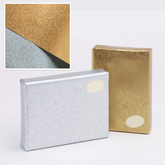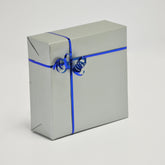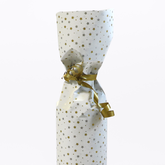Does using Paper void fill mean plastics are completely eliminated?

A growing number of eco-conscious Ecommerce brands are turning to paper void fill as an alternative to polystyrene, Styrofoam, or bubble wrap. This makes the packaging products easier to recycle and reduces the environmental impact of production.
Paper void fill is a protective packaging product used to fill empty spaces in boxes or cartons during shipping, and there are several types of void fill product now available to retailers, including crumpled paper, paper pads, and even paper-based packing nuggets as an eco-friendly alternative to Styrofoam pieces.
Paper void fill product can provide similar levels of protection and shock absorption to traditional plastic products but should be chosen carefully to accommodate the weight and fragility of the items being shipped, and the size of the box, in order to fully protect against damage in transit.
Because paper void fill products are a fairly new proposition, not all brands are comfortable with the idea of completely replacing plastics from their packaging strategy – so are there any other eco-friendly solutions available to brands who want to switch from traditional plastic void fill while retaining the cost efficiency and security benefits of traditional plastics?
Bioplastic
One option that many Ecommerce businesses consider is bioplastic void fill. These products are made from renewable sources such as cornstarch and sugarcane and are easier to break down in the environment than petroleum-based void fill products. However, bioplastics are often weaker than traditional plastics, making them inadequate for certain types of application, such as void fill products that need to withstand a lot of weight or pressure in transit. Also, bioplastic is often difficult to recycle and can contaminate waste streams, potentially causing more environmental damage in the long run.
Biodegradable plastic
Another option to consider is biodegradable plastic void fill. These plastics are designed to eventually completely break down in the environment. However, most biodegradable plastics do not break down into soluble nutrients, but into smaller and smaller pieces of plastic – i.e. micro plastics – which can be even more dangerous for animals to digest. Moreover, many biodegradable plastics release methane when they break down, which is a damaging greenhouse gas that is strongly linked to climate change, so while biodegradable plastics may seem like a better option initially, they are not necessarily the most sustainable long-term choice of void fill product.
Recycled plastic
Recycled plastic void fill is a good way of reducing overall plastic waste. These products are made from recycled plastic materials, which means that they don’t contribute to new plastic production and can often be recycled again at the end of their life-cycle. While recycled plastic may not break down as easily as bioplastic or biodegradable plastic, its capacity to be recycled again makes it a positive choice for the environment.
Compostable plastic alternatives
Some Ecommerce brands are also exploring alternatives to both plastic and paper, such as compostable void fill materials made from mushroom fibres and vegetable waste. The downside of these products is that they often require specialist composting facilities, which may not be available in all areas.
Find out more
At Kudos Giftwrap, we offer a range of sustainable and cost-effective packaging solutions for various packaging applications, including void fill. To find out more, please get in touch with one of our sustainable packaging specialists today by clicking here.






